DSIRE Updates Detailed Summary Maps Highlighting Renewable Energy Policies and Incentives Across the United States
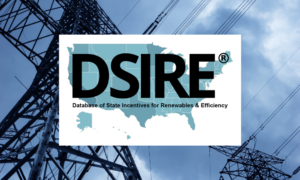 The North Carolina Clean Energy Technology Center (NCCETC) has recently refreshed numerous comprehensive summary maps within the Database of State Incentives for Renewables and Efficiency (DSIRE). DSIRE is recognized as the most comprehensive source of information on clean energy related policies and incentives in the United States and is operated by NCCETC’s Policy & Markets program.
The North Carolina Clean Energy Technology Center (NCCETC) has recently refreshed numerous comprehensive summary maps within the Database of State Incentives for Renewables and Efficiency (DSIRE). DSIRE is recognized as the most comprehensive source of information on clean energy related policies and incentives in the United States and is operated by NCCETC’s Policy & Markets program.
DSIRE creates color-coded summary maps to provide a geographical overview of policies that promote the expansion of renewable energy. Currently available policy maps include third-party solar power purchase agreements policies, net metering policies, distributed generation customer credit rates for excess generation, renewable portfolio standards, energy storage targets, energy efficiency resource standards, electric vehicle and charging equipment incentives, community solar rules, and solar access and easement laws.
“We love seeing our summary maps used by others in their publications and presentations. We intentionally provide our maps as PowerPoint files to make it as easy as possible for people to slip them into their presentations. We just ask for proper citation.” said Brian Lips, Senior Project Manager for DSIRE.
Third Party Solar Photovoltaic Power Purchase Agreement Policies (as of November 2023)
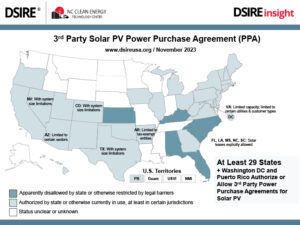
State authorization of third party solar photovoltaic (PV) power purchase agreements (PPAs) enable residential customers to purchase power generated by solar panels on their roof at a fixed rate from a third party which owns the PV system. The third party developer is responsible for operating and maintaining the solar PV system, while the host customer uses the system to reduce their utility bill..
At least 29 states, plus the District of Columbia (DC) and Puerto Rico, authorize or allow third party PPAs for solar PV.
Net Metering Policies (as of November 2023)
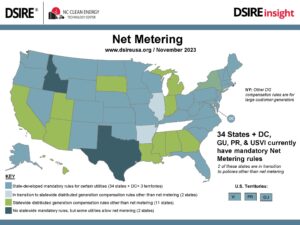
For electric customers who generate their own electricity, net metering allows for the flow of electricity both to and from the customer. When a customer’s generation exceeds their consumption, electricity from the customer flows back to the grid – typically through a bi-directional meter – and this energy is credited to the customer, offsetting electricity consumed during times when the customer otherwise would have to purchase at the utility’s full retail rate.
Net metering rules are mandatory in 34 states as well as DC, Puerto Rico and the US Virgin Islands. Two of these states, Idaho and Texas, are currently in transition to policies other than net metering.
Distributed Generation Customer Credit Rates for Excess Generation (as of November 2023)
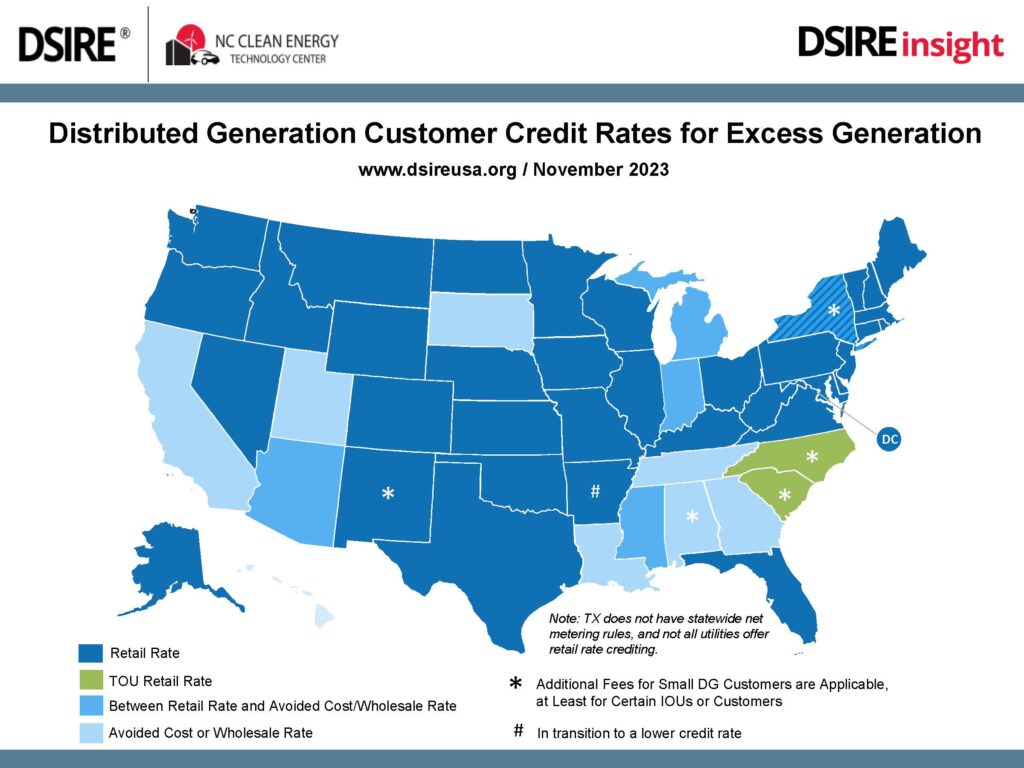
Customers with distributed generation receive compensation for excess electricity exported to the grid through a net metering arrangement. Compensation mechanisms vary, with some utilities offering credit at the retail rate, while others provide credit at the “avoided energy” rate. States like North Carolina and South Carolina offer credits based on time of use (TOU) rates. Moreover, certain states provide credits between the retail rate and the avoided cost/wholesale rate of electricity.
Solar Access and Easement Policy (as of November 2023)
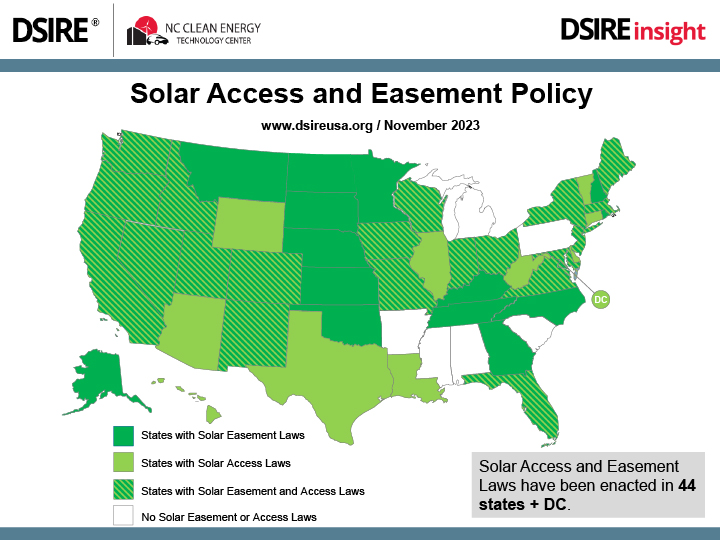
Solar Access and Easement laws have been enacted in 44 states along with DC. Solar access laws limit the ability of homeowners associations and similar organizations to prohibit a homeowner from installing solar on their roof. Solar Easements are mutual agreements between adjacent property owners that ensure their rights to accessing sunlight. This allows a property owner to use and access sunlight across a property line unimpeded by neighboring property owners.
Community Solar Rules (as of November 2023)
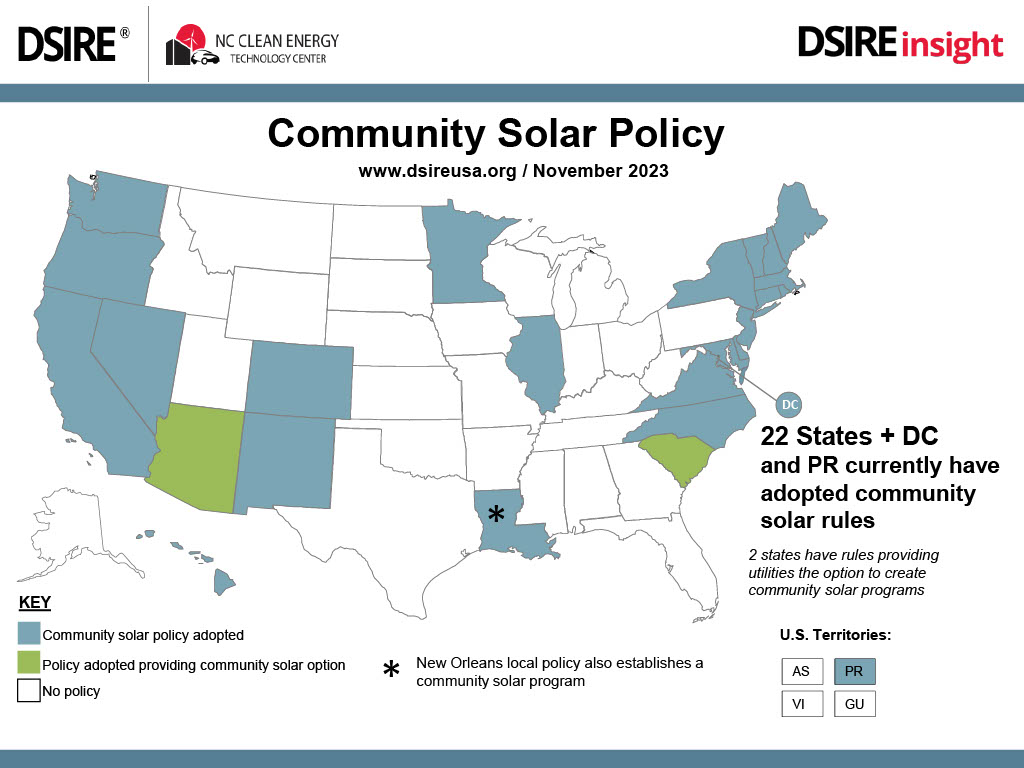
Community solar programs allow electric utility customers to purchase or subscribe to a portion of the energy generated by a larger solar PV system. Community solar customers are able to receive credit on their electricity bill for electricity generated by their share of the community solar system. Typically, utilities and other players in regulated markets must receive authorization from state policymakers to operate community solar programs. This also gives policymakers the opportunity to shape the rules in a way that meet other policy goals for the state, while ensuring that all utility customers can have equitable access to the advantages offered by community solar programs.
Rural electric cooperatives and municipal utilities in most states operate in a self-regulated capacity and can bypass the necessity for state authorization. Additionally, certain states adopt a collaborative paradigm in which third-party entities are authorized to administer community solar programs, with local utilities facilitating these projects with integration into their existing billing processes.
Community solar rules have been adopted in 22 states, plus DC and Puerto Rico. In South Carolina and Arizona, state legislators have adopted policies providing utilities the option to create community solar programs.
Renewable Portfolio Standards and Clean Energy Standards (as of December 2023)
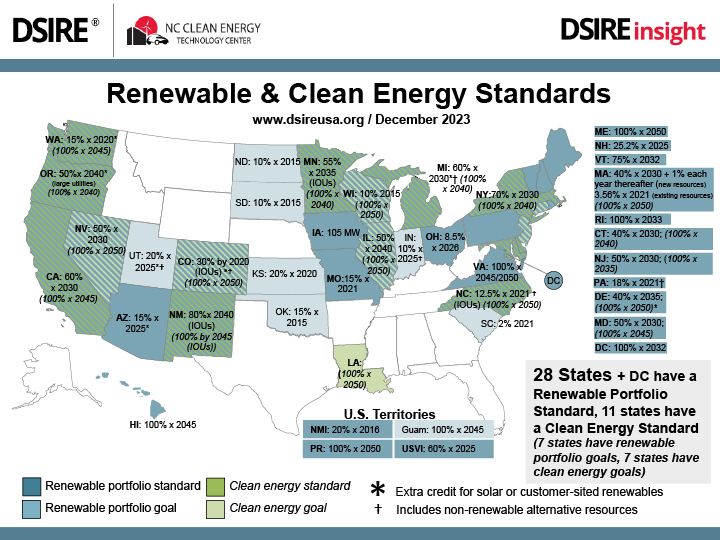
Renewable Portfolio Standards (RPS) and Clean Energy Standards (CES) are one of the primary policy tools used by legislators to encourage the decarbonization of the US electricity supply. These policies vary from state to state on several variables, including clean energy targets, the entities included, resources eligible to meet these standards and cost caps. Eligible resources are dependent on each state’s policy but often encompass renewable energy technologies such as solar, wind, biomass, geothermal and certain hydroelectric facilities.
RPS policies have been established in 28 states plus DC while 11 states have established a CES. Additionally, Puerto Rico, Guam, the US Virgin Islands, and the North Mariana Islands have set renewable portfolio targets at varying levels.
Electric Vehicle & Electric Vehicle Supply Equipment Incentives (as of November 2023)
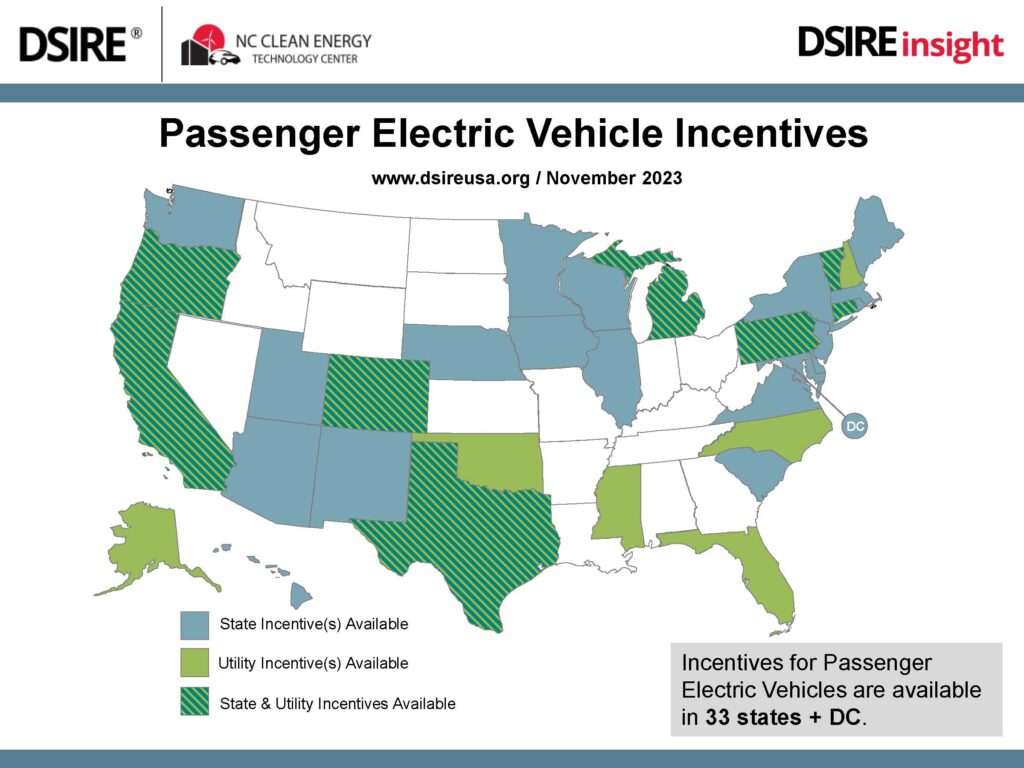
There are currently state or utility incentives available in 33 states and DC for passenger electric vehicles (EVs) and plug-in hybrid vehicles. Incentives for electric vehicle supply equipment (EVSE) are available in 45 states as well as DC.
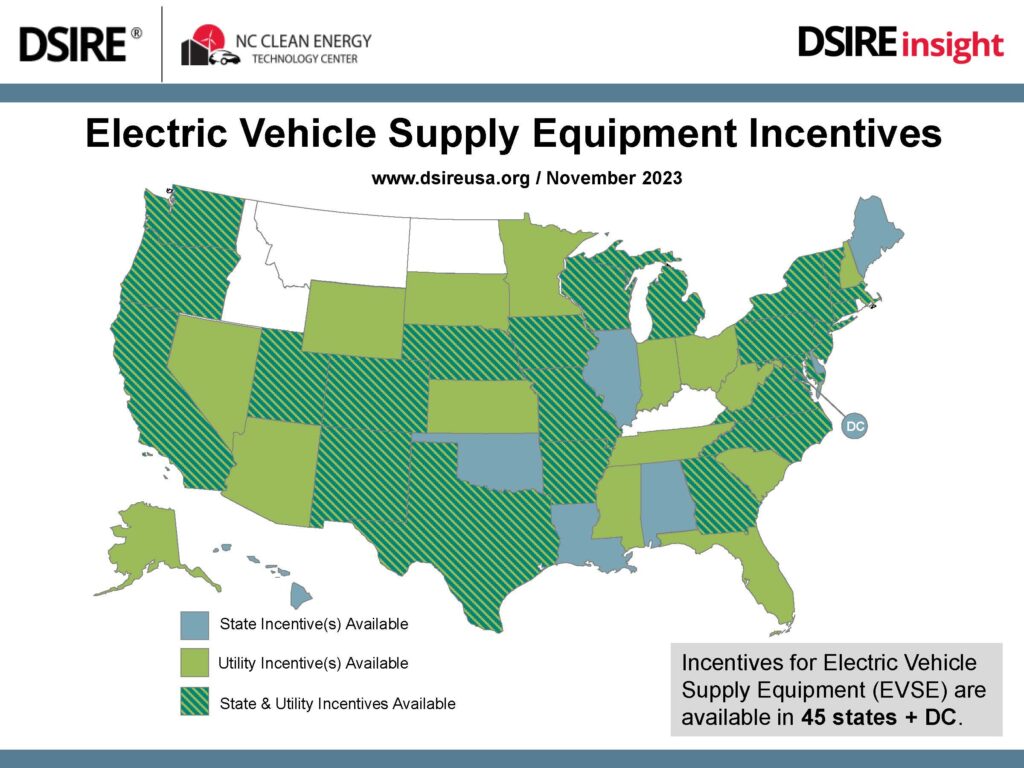
All detailed summary maps created by DSIRE can be found here. These maps are available as both PDFs and PowerPoint slides for easy incorporation into presentations and reports.